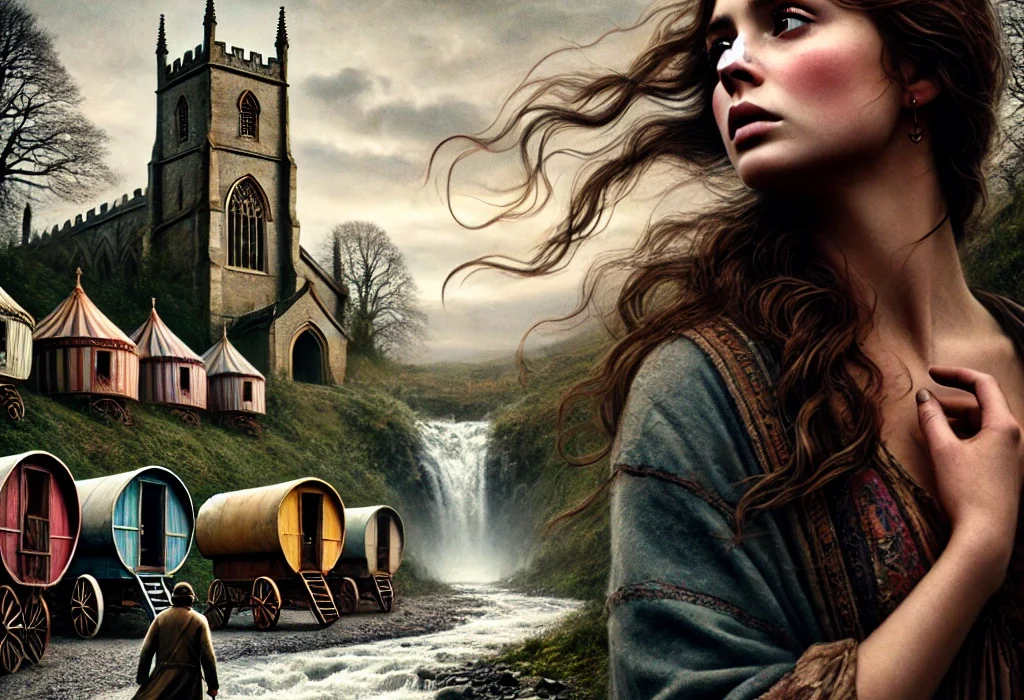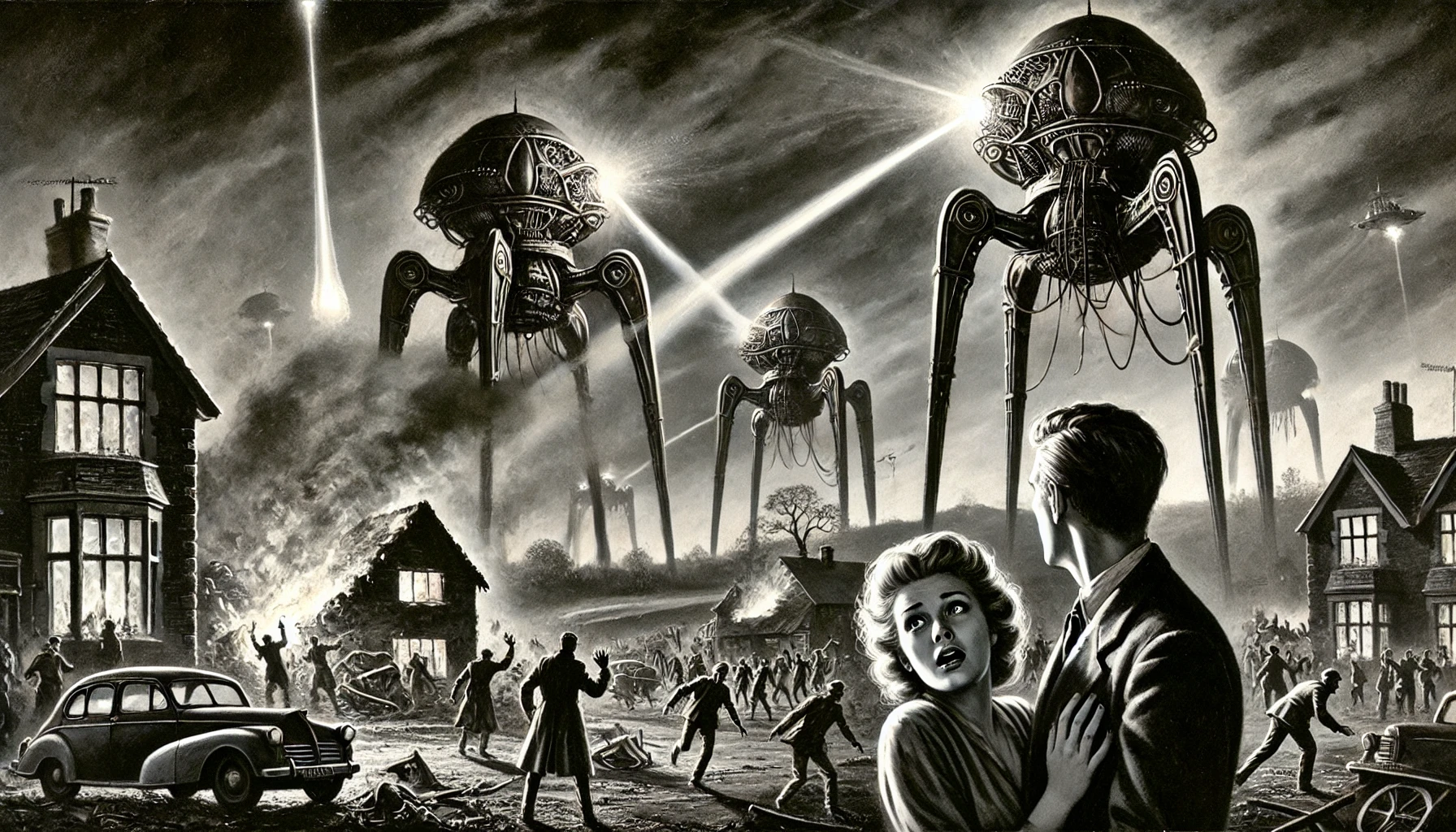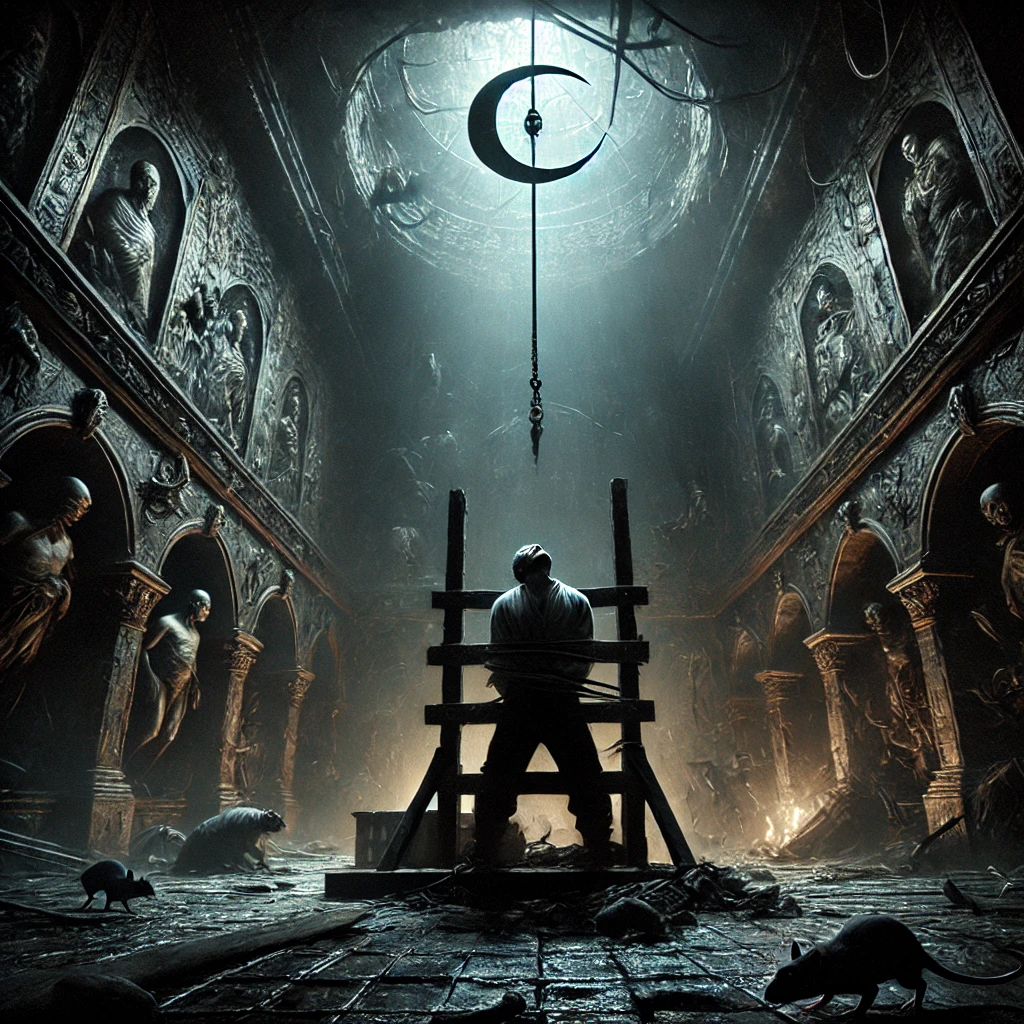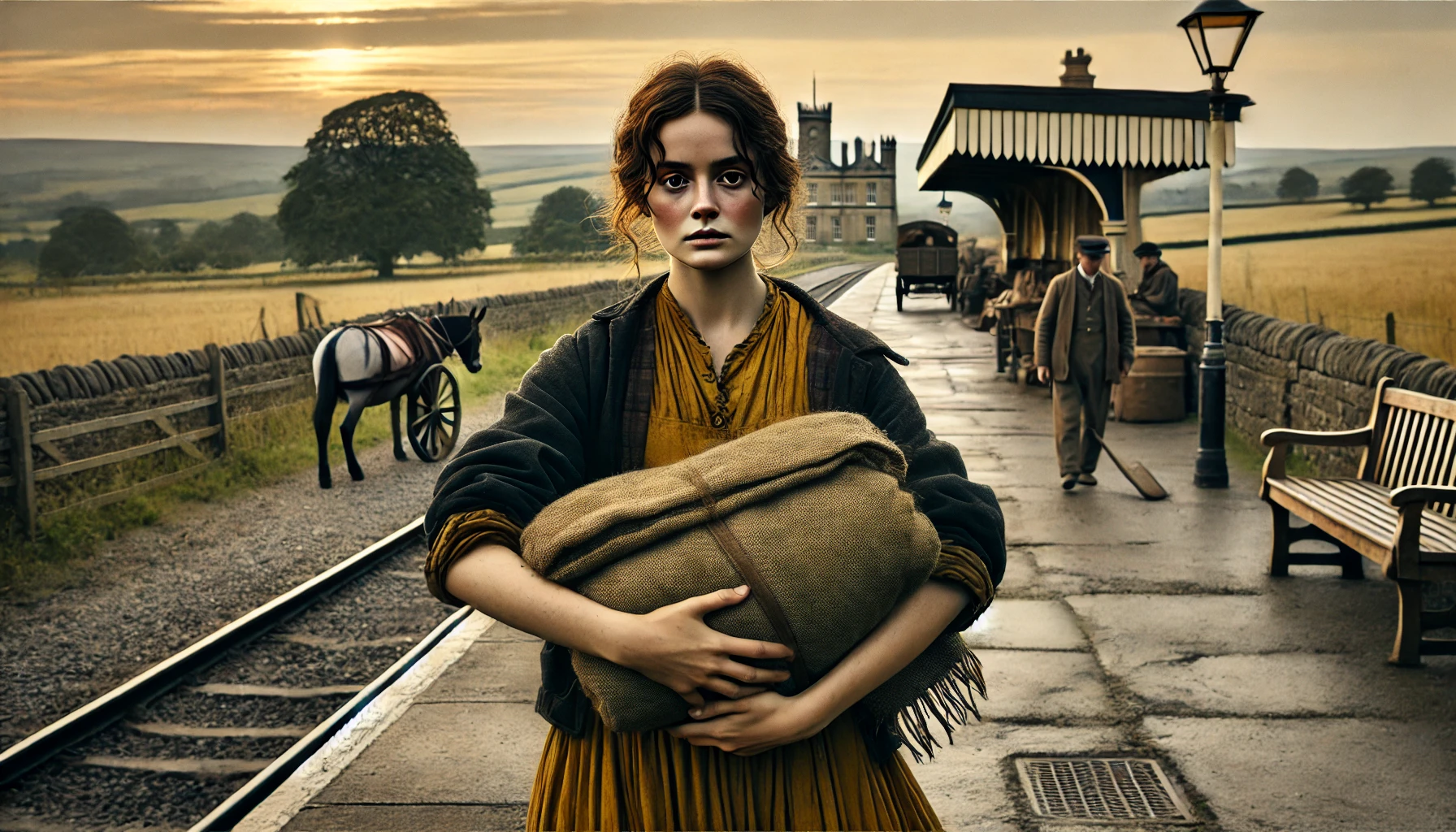The Virgin and the Gipsy is a novella written by D. H. Lawrence, first published posthumously in 1930. The story revolves around two young women, Yvette and Lucille, daughters of a clergyman, who live in a small, stifling village in England. They encounter a gypsy man who fascinates Yvette, stirring her desires and leading her to question the constrained world she inhabits. The novella explores themes of repression, desire, and societal norms, set against the backdrop of post-World War I England.
Plot Summary
Yvette and Lucille Saywell, two young sisters, return to their father’s rectory after finishing their education abroad. The house is steeped in an atmosphere of emotional repression, overshadowed by the scandal of their mother, Cynthia, who had left their father for another man years ago. This act of betrayal casts a long shadow over the household, leaving the Rector—Arthur Saywell—mourning the memory of his wife while hypocritically upholding a strict moral code. He is a man lost in his self-righteousness, unaware of the suffocating impact his rigid ways have on his daughters. The girls are trapped in this oppressive environment, under the ever-watchful eyes of Granny, the real matriarch of the house, and Aunt Cissie, who seethes with bitterness and resentment.
Yvette, the younger sister, is the more restless of the two. Her spirit yearns for freedom and something beyond the narrow confines of their dull life in Papplewick. She detests the staleness of their home, where the constant presence of Granny—self-important and overbearing—looms like a heavy weight. The old woman rules the household, her every whim indulged by the Rector and Aunt Cissie, who both defer to her. Aunt Cissie, in turn, takes out her frustrations on the girls, especially Yvette, whose youthful beauty and vitality only serve to deepen Cissie’s jealous rage.
Lucille, the elder, is more practical and resigned to their situation. She busies herself with her job in the city, becoming the family’s responsible one. Yet, even she feels the dull ache of their sterile life, though she does her best to suppress it. Yvette, however, rebels against the stifling moral atmosphere. She finds the routines of the church, the community events, and the hollow social gatherings unbearable. Her relationship with her father is strained. She feels his coldness, his failure to truly see her for who she is. He is consumed by a false piety and the memory of his wife, who remains, in his mind, an idealized figure, untouched by her betrayal.
One day, during an excursion with friends, Yvette encounters a group of gypsies camped by the roadside. Among them is a tall, handsome man who exudes an effortless sense of freedom. His dark eyes and insolent confidence stir something deep within Yvette—something primal and forbidden. The gypsy represents a world so different from her own: a world unshackled by the rigid rules and moral codes she has been forced to live by. The attraction is immediate, though unspoken. In him, Yvette sees the possibility of escape, of a life lived without shame, and the stirrings of her own desires are awakened for the first time.
As time passes, Yvette finds herself drawn repeatedly to the thought of the gypsy. She feels trapped in her home, where she is constantly judged, either by the calculating eyes of Granny or the bitter sneers of Aunt Cissie. Her father, too absorbed in his own self-pity, fails to notice her growing discontent. Yvette begins to rebel in small ways, distancing herself from the social expectations of her community. She skips Sunday School, avoids church duties, and defies Aunt Cissie’s attempts to control her behavior. The tension in the house builds, with Yvette’s fiery temper often flaring up against Aunt Cissie’s constant nagging.
One evening, at a family gathering, Yvette steals away to visit the gypsies again. This time, she and the gypsy man exchange glances, and though no words are spoken, a connection is made. Yvette’s fascination with him deepens, and she feels herself teetering on the edge of something dangerous, yet thrilling. The gypsy’s dark, inscrutable presence haunts her thoughts, filling her with a sense of both fear and desire. She knows that to pursue him would be to defy everything her family stands for, yet she cannot resist the pull of the unknown.
Back at the rectory, Yvette’s restlessness grows. The suffocating life she leads there becomes more unbearable with each passing day. Aunt Cissie’s spiteful outbursts, fueled by her envy of Yvette’s youth and beauty, escalate, culminating in a confrontation where Yvette is accused of selfishness and irresponsibility for borrowing money from the church’s Window Fund. The incident leaves Yvette humiliated and ashamed, though inwardly, she knows that her true crime in Aunt Cissie’s eyes is her vitality, her very existence as a young, desirable woman.
The turning point comes when a great flood strikes the village. The Papple River, swollen from days of rain, bursts its banks, and the rectory is threatened by the rising waters. Amid the chaos, the tension between Yvette’s inner desires and the suffocating constraints of her family life reaches its peak. In a moment of crisis, the gypsy reappears. He offers Yvette a lifeline, a chance to escape the floodwaters and the metaphorical flood of repression that has drowned her spirit for so long.
In the midst of the flood, Yvette is faced with a choice: to remain loyal to her family and the stifling world they represent or to embrace the wild, untamed life the gypsy embodies. The gypsy rescues her from the rising waters, and in that moment of physical and emotional rescue, Yvette feels a profound connection to him—one that transcends the boundaries of her past life. The flood becomes a symbol of purification, washing away the old constraints and leaving her with the possibility of a new beginning.
As the floodwaters recede, Yvette stands on the brink of a new life, her soul awakened to the possibilities that lie beyond the narrow confines of her upbringing. The future is uncertain, but she has glimpsed a world of freedom, and she knows that her life will never be the same again.
Main Characters
Yvette Saywell: The younger of the two sisters, Yvette is restless, passionate, and rebellious. She feels trapped in the rigid, moralistic environment of her family and longs for escape. Her encounter with the gypsy awakens her latent desires and leads her to confront her emotions and the limitations imposed on her by society.
Lucille Saywell: Yvette’s older sister, Lucille is more grounded and pragmatic. She appears to accept the constraints of their conservative lifestyle but is often frustrated by Yvette’s impulsiveness and the emotional tension in their household. Though more restrained, Lucille also harbors her own struggles with conformity.
The Rector (Arthur Saywell): The girls’ father, a clergyman who is emotionally distant and hypocritical. He upholds a rigid, moralistic lifestyle and is haunted by the betrayal of his wife, who left him for another man. His piety masks an inner emptiness and selfishness, contributing to the stifling environment in which his daughters are raised.
Granny (The Mater): The domineering matriarch of the Saywell family, Granny wields significant power within the household. She enforces strict moral codes and holds an almost tyrannical influence over her family, making Yvette’s desire for freedom even more poignant.
The Gypsy: A mysterious, sensual figure who captivates Yvette with his free-spirited nature. He represents the opposite of the repressed world Yvette inhabits and becomes a symbol of liberation, desire, and rebellion.
Theme
Repression and Desire: The central theme of the novella is the tension between societal repression and personal desire. Yvette’s burgeoning sexuality and emotional unrest are stifled by her rigid, puritanical surroundings. The gypsy represents the raw, natural passions that Yvette has been taught to suppress.
Class and Social Norms: The novel critiques the strict social hierarchies and moral codes of post-Victorian England. The Saywell family, particularly the Rector and Granny, represent the rigidity and hypocrisy of middle-class respectability, while the gypsy symbolizes freedom from these social constraints.
Nature vs. Civilization: Lawrence often juxtaposes the wild, untamed forces of nature with the cold, mechanical order of civilization. In this novella, the gypsy’s connection to nature contrasts with the stifling, claustrophobic environment of the Saywells’ home, highlighting the conflict between freedom and repression.
The Power of Femininity: Yvette’s struggle to understand her own identity is closely tied to her exploration of femininity. The novella portrays her journey of self-discovery as she navigates the complex dynamics of power, desire, and societal expectations placed upon women.
Writing Style and Tone
Lawrence’s writing style in The Virgin and the Gipsy is characterized by its intense emotional depth, psychological insight, and evocative descriptions of nature. He blends lyrical, often sensual prose with sharp social criticism. The novella’s tone oscillates between the oppressive, claustrophobic atmosphere of the Saywells’ world and the liberating, almost mystical allure of the gypsy and nature.
In this novella, Lawrence employs vivid imagery and symbolic contrasts to heighten the emotional tension between the characters. His descriptions of the natural world—lush, wild, and untamed—serve as a counterpoint to the stifling moral rigidity of the Saywell household. The gypsy and his world are often depicted in almost primal terms, invoking the power of the natural, instinctual side of human existence. Lawrence’s narrative voice is both introspective and critical, probing the inner lives of his characters while offering a subtle critique of societal repression.
We hope this summary has sparked your interest and would appreciate you following Celsius 233 on social media:
There’s a treasure trove of other fascinating book summaries waiting for you. Check out our collection of stories that inspire, thrill, and provoke thought, just like this one by checking out the Book Shelf or the Library
Remember, while our summaries capture the essence, they can never replace the full experience of reading the book. If this summary intrigued you, consider diving into the complete story – buy the book and immerse yourself in the author’s original work.
If you want to request a book summary, click here.
When Saurabh is not working/watching football/reading books/traveling, you can reach him via Twitter/X, LinkedIn, or Threads
Restart reading!








